A connected vehicle is one that is capable of connecting over wireless networks to nearby devices. Connected vehicles are an important factor in the advance of IoT. The use cases range from connected entertainment systems that connect with the driver’s mobile phone to Internet-connected vehicles that have bi-directional communication with other vehicles, mobile devices and city intersections.
Connected vehicle is an Internet of Things (IoT) technology with broad implications. As we shared in our blog post, Safety Trends in Traffic Management, connected vehicle technology is part of the Intelligent Transportations Systems government initiative, and there are many active trials around the world today.
One of the primary use cases for the IoT car is safety, via rapid vehicle-to-vehicle and vehicle-to-roadside unit communications (also known as V2X). But there are many other examples of connected vehicle technology at work in the automotive IoT space as well, as we will explore.
How Does Connected Vehicle Work?
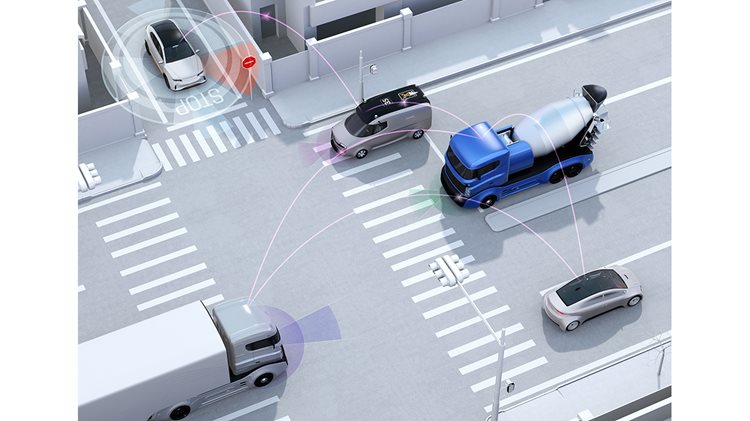
Connected vehicles connect to a network to enable bi-directional communications between vehicles (cars, trucks, buses and trains) and other vehicles, mobile devices and infrastructure for the pupose of triggering important communications and events. In the case of city traffic and intersection safety, for example, those communications can enable vehicles outfitted with connected vehicle technology to continuously communicate their locations and to receive near real-time information that triggers an automated response.
The
connected vehicle government fact sheet provides a concise, easy-to-understand description:
Cars, trucks, buses, and other vehicles will be able to “talk” to each other with in-vehicle or aftermarket devices that continuously share important safety and mobility information with each other. Connected vehicles can also use wireless communication to “talk” to traffic signals, work zones, toll booths, school zones, and other types of infrastructure. The vehicle information communicated is anonymous, so vehicles cannot be tracked and the system is secure against tampering.
These communications will have a range of effects, which we will discuss next.
Examples of Connected Vehicles at Work in the IoT
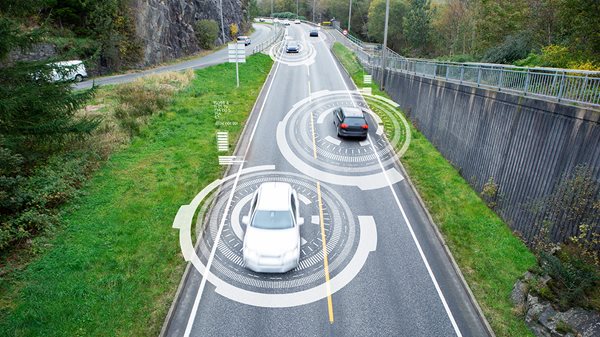 With vehicles becoming more sophisticated and more connected, cars today are connecting to more sophisticated, high-bandwidth networks, in order to enable a range of capabilities. For example, automotive IoT enables high-speed vehicle-to-vehicle and vehicle-to-infrastructure communications to trigger the following results, many of which are possible today:
With vehicles becoming more sophisticated and more connected, cars today are connecting to more sophisticated, high-bandwidth networks, in order to enable a range of capabilities. For example, automotive IoT enables high-speed vehicle-to-vehicle and vehicle-to-infrastructure communications to trigger the following results, many of which are possible today:
- Adaptive cruise control
- Automatic route planning based on real-time conditions
- Traffic redirected away from congestion
- Automatically updated road signage, to report traffic or conditions
- Communications to drivers, notifying them of crash sites or wrong-way drivers ahead
- Automatic vehicle braking to prevent collisions (in trials)
- Autonomous and semi-autonomous vehicle control (in trials)
GPS is one example of a technology that supports connected vehicle, as the GPS network allows a car to plan a route, taking into account current traffic conditions to avoid traffic jams. The sophistication of GPS and its use by connected vehicles will continue to evolve with lower-latency networks and the advance of connected vehicle technology.
OnStar is another example, with a car connecting to an OnStar representative so that a driver can get assistance when needed. Today, connected vehicles are being equipped with 4G receivers to create an in-vehicle hotspot.
These are just a few of the ways in which today’s connected vehicles are integrating with networks in smart cities and supporting development of the highly sophisticated communications required for autonomous driving.
How Will 5G Networks Impact Connected Vehicle Technology?
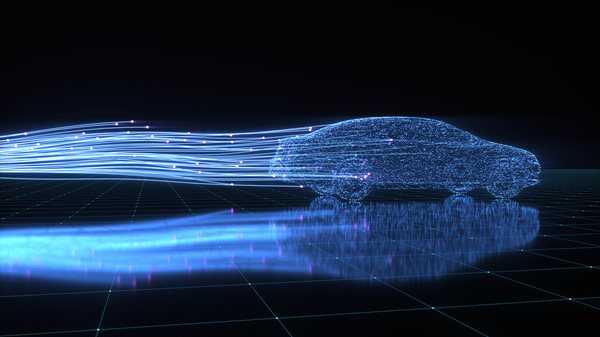
Soon, connected vehicles will be built with 5G receivers and transmitters. A 5G module will allow connected vehicles to communicate with each other in near real time.
As a simple example, two cars going in opposite directions could share road conditions based on where they’ve just been. One of the most interesting IoT use cases is that connected vehicles can transmit data about how they’re driving. For example:
- Self-driving cars will communicate their position, which will allow them to safely drive side by side as well as merge at high speeds.
- Connected vehicles will communicate at stoplights and stop signs to determine which vehicle has the right of way.
- A vehicle will also be able to connect to a city’s network to find parking, locate a business or residence, or avoid areas with construction or congestion.
- Most importantly, the dramatic reduction in latency will enable the key reason for connected vehicle technology, which is to prevent accidents and collisions, primarily in city intersections.
As
Tesla has shown, self-driving cars can generally do okay on highways and other roads that don’t have complex obstacles. However, today autonomous vehicles do not safely navigate difficult intersections and other obstacle-ridden areas in dense cities. With enough sensors and cameras, and the high-speed, low-latency communications that 5G networks will deliver, the future IoT car will ultimately be able to navigate safely through these difficult zones.
Internal On-Board Use Cases for Connected Vehicle Technology
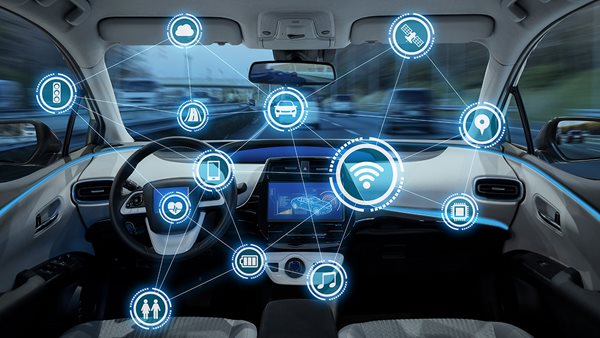
Internally, a connected vehicle is designed to connect to a driver’s or passenger’s smartphone, to vastly increase the functionality beyond playing music or routing a phone call through the car’s speakers.
For example:
- The connected vehicle can be turned on or off with a smartphone.
- The vehicle can share diagnostic data and remind the owner about upcoming service requirements, such as oil changes.
- In the event that the vehicle is stolen, it can share its location.
- The owner can use an app to have the flash its headlights in the parking lot so that the car stands out.
There are many interesting possibilities for a connected vehicle and we’re just beginning to explore them.
The Communications Backbone for Connected Vehicle
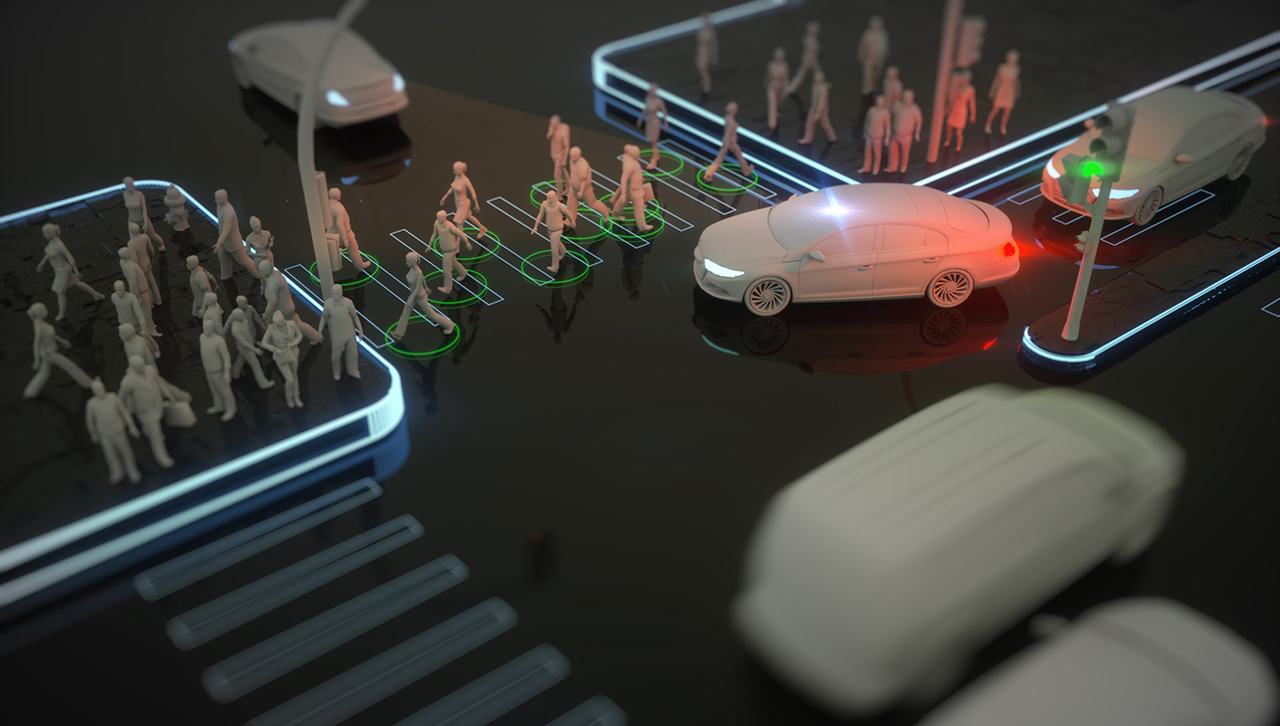
The infrastructure supporting smart city and automotive IoT initiatives like Intelligent Transportation Systems (ITS) will help connected vehicle systems to reach their full potential. Today, these deployments use sensors, cameras and RFID readers to monitor intersections and roadways to identify congestion, automatically reroute traffic, identify distances to various destinations and update signage. And public safety will improve, as intersections become safer for pedestrians and cyclists, and adaptive traffic lighting enables emergency responders to get to accident scenes faster.
As networks continue to advance and AI capabilities improve, the capabilities of traffic management systems will continue to advance as well; for example they will be able to monitor traffic in real time and use historical data to identify where traffic buildup is likely before it happens. Smart cities are deploying these systems for their excellent traffic management capabilities today, and their more sophisticated connected vehicle capabilities tomorrow.
Today, Digi cellular routers are providing the mission critical communications for these deployments, with over 20,000 intersections installed at this writing. With Gigabit Ethernet speeds, multiple ports and compute power,
Digi transportation routers are IoT solutions that provide the needed speed, compute power and connectivity to manage the full range of devices at work in today's complex traffic management scenarios, while paving the way for the connected vehicle future.
Most importantly, cities can deploy these systems today to dramatically improve the effectiveness of their entire traffic management system while
reducing the cost and complexity of their infrastructure and preparing for the next generation of connected vehicle.
Contact us today to learn how Digi IoT solutions can support your smart city and traffic management goals.